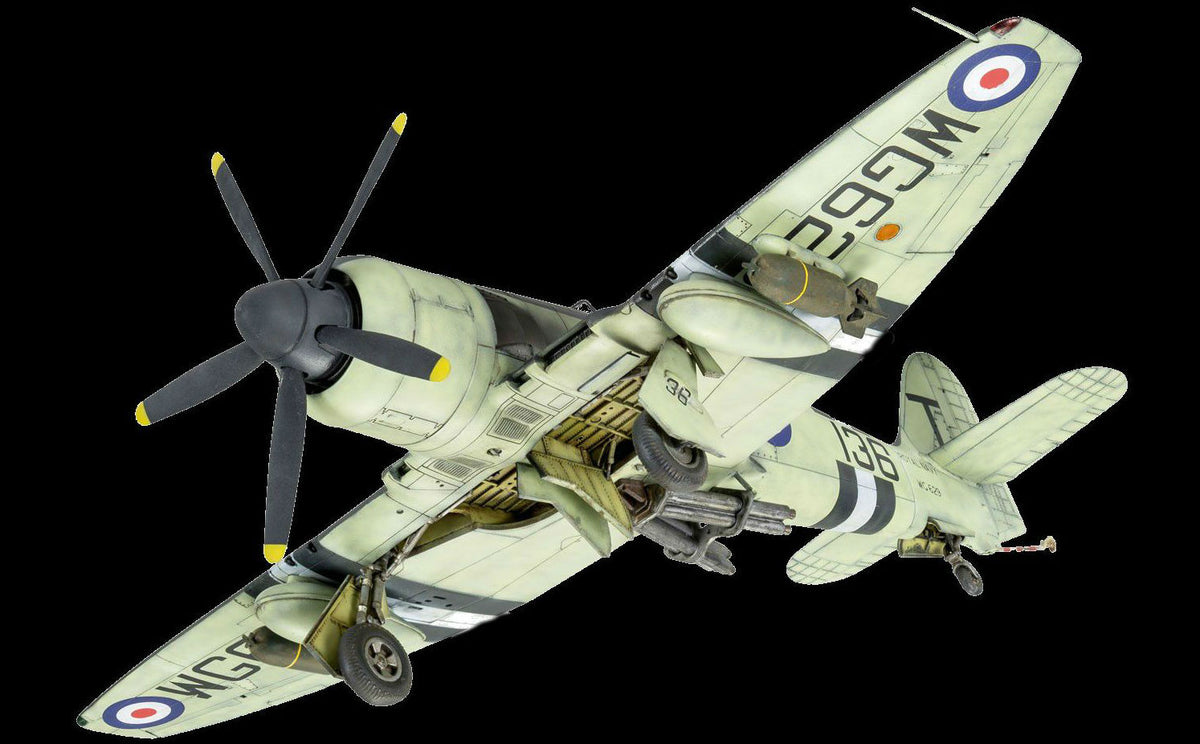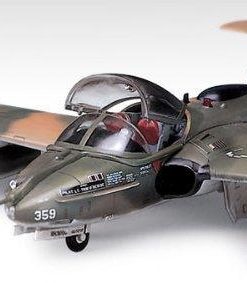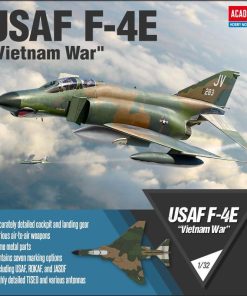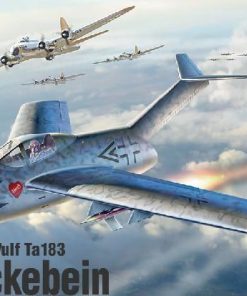Airfix Aircraft 1/48 Hawker Sea Fury FB II Aircraft (New Tool) Kit Estimated Shipping: 2-3 Business Days
$ 26,99 $ 16,19
The development of the Hawker Sea Fury can be traced back to the inadvertent landing of a Focke Wulf FW 190 at an RAF airfield in South Wales back in 1942. The opportunity to evaluate this latest Luftwaffe fighter resulted in requirements being issued for a new British design, which must have the performance to better the Focke Wulf in every phase of flight and ensure the RAF could secure air superiority. The protracted development of the new fighter resulted in a number of specification alterations and the RAF eventually withdrawing their interest, leaving the new aircraft to be produced as a high-performance naval fighter. The Hawker Sea Fury was an extremely potent aircraft and handling this powerful machine from the deck of a moving aircraft carrier must have required nerves of steel.
The first deck landing trials commenced in the winter of 1946 and the navy had their ultimate piston-engined fighter. Despite the advent of the jet engine, the Sea Fury would remain as the Fleet Air Arms principle single-seat fighter until 1953, when it would be replaced by the jet-powered Hawker Sea Hawk. The aircraft also saw service with a number of overseas air arms, in a variety of operational roles, including strike fighter, trainer and high-speed target towing. As one of the most capable piston-engined fighters ever produced, the Sea Fury would also become a popular aircraft in the world of air racing, where the brute power and sheer speed of this magnificent aircraft saw it victorious in countless competitions.
Professionally packed and fast shipping
Because of our long-standing partnership with UPS, FedEx, DHL and many other top global carriers we can provide an array of shipping options. Our warehouse staff are highly skilled and will pack your products according to our exact and precise specifications. Your products will go through an extensive inspection and will be properly secured before they are shipped. We ship to thousands clients every day in a variety of countries. Our determination to be the biggest online retailer around the globe is evident by this. Warehouses and distribution centers are located throughout Europe and the USA.
Orders with more than one item are given processing time in accordance with the item.
Before shipping, we will examine the items ordered thoroughly before sending the items. Today, the majority of orders will be delivered within 48 hours. The expected delivery time will be between 3 and 7 days.
Returns
Due to the multiple parties involved which include the factory as well as the warehouse, we are unable to completely manage our stock. So the actual stock may change at any time. Be aware that it's possible for your order to become unavailable even after you have placed the order.
Our policy is valid for 30 days. However, if thirty days have passed after you bought your product, we are unable to provide a refund or exchange.
Your item should be in the original packaging and in good condition. It must also not be used. It should also be in the original packaging.
Related products
MODEL AIRCRAFT
Academy Aircraft 1/48 SBD2 Midway USN Bomber Kit Estimated Shipping: 2-3 Business Days
MODEL AIRCRAFT
MODEL AIRCRAFT
MODEL AIRCRAFT
MODEL AIRCRAFT
MODEL AIRCRAFT
Academy Aircraft 1/144 B47 USAF Nuclear Bomber Kit Estimated Shipping: 3-4 Business Days
MODEL AIRCRAFT
Academy Aircraft 1/72 B29A Enola Gay/Bockscar Bomber Kit Estimated Shipping: 2-3 Business Days
MODEL AIRCRAFT
Academy Aircraft 1/72 A37B Dragonfly Aircraft Kit Estimated Shipping: 3-4 Business Days
MODEL AIRCRAFT
Academy Aircraft 1/32 F4E USAF Fighter Vietnam War Kit Estimated Shipping: 3-4 Business Days
MODEL AIRCRAFT
Academy Aircraft 1/72 EA-18G VAQ141 “Shadow Hawks” Fighter Kit Estimated Shipping: 3-4 Business Days
MODEL AIRCRAFT
Academy Aircraft 1/144 B52H 20th BS Buccaneers USAF Subsonic Strategic Bomber Kit OUT OF STOCK
MODEL AIRCRAFT
MODEL AIRCRAFT
MODEL AIRCRAFT
Academy Aircraft 1/48 P40N USAAF Fighter Battle of Imphal Kit Estimated Shipping: 3-4 Business Days


























































